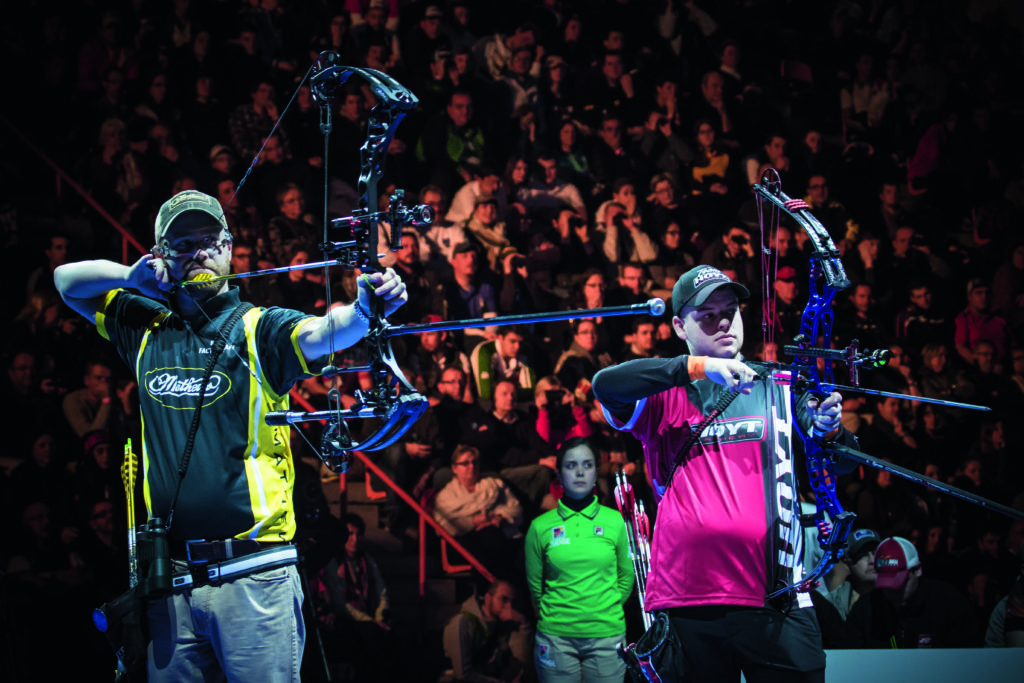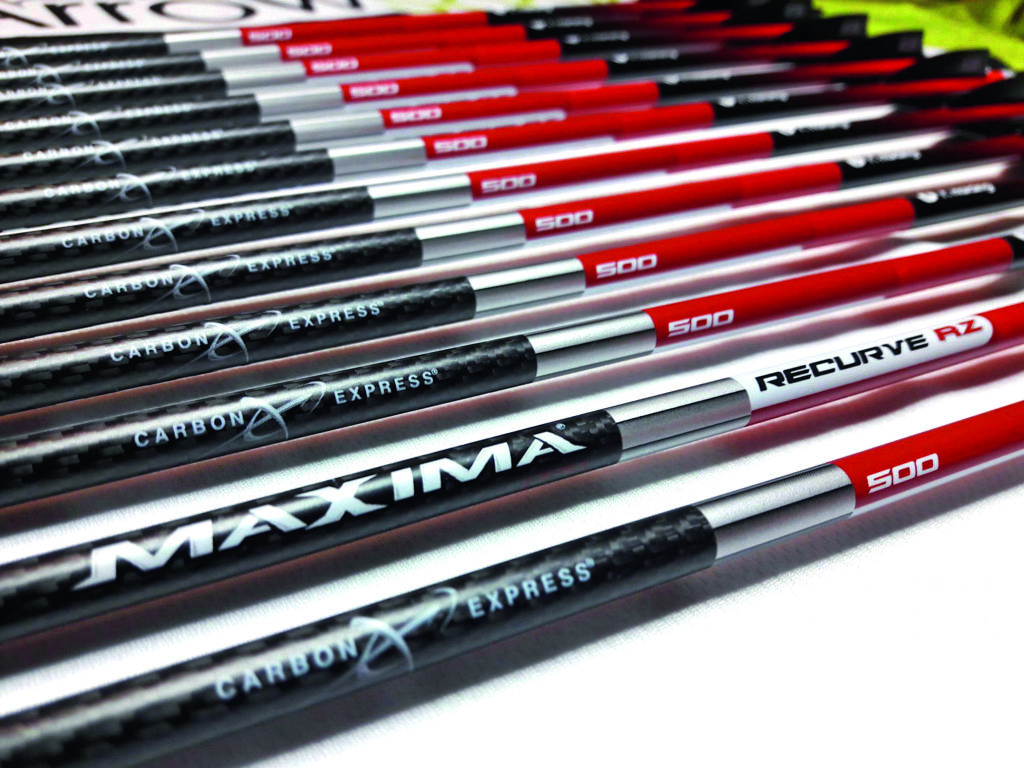Our expert panel answers your questions. Send yours to [email protected]
Q: I’ve noticed that whenever I shoot a perfect end I tend to follow this up by shooting badly in my next end. What’s going on?
Duncan Busby says: You may think this is a problem with your equipment, and some archers who experience this very frustrating phenomenon will start to take apart their bow for this very reason. But as long as your equipment is set up well and no important measurements have changed I’d focus first on the possibility of fatigue instead, especially if you find yourself struggling with your bow’s draw weight or mass weight.
Have a rest between ends when you can, if you notice an improvement in your results when you come back to it, try and lighten your load. Typically though, this trend is more likely to be a result of your mental state, especially if your results follow this particular predictable pattern.
Archery is frequently described as a mental game; good technique and good equipment will only get you so far, as you have found. Unfortunately failure is often linked to unhealthy attitudes; this line of thinking is addictive, and when you start down that road, you are more likely to lose focus on what’s actually important, as you try even harder to find the groove again.
The most important thing to remember is this: shooting an arrow should be a subconscious process. If it changes to a conscious action, as you may have found in your desire to find that success again, your results will nearly always be affected.
The good news is that you have already found a good mental approach in the perfect ends you do shoot; you just need to learn how to maintain it after a successful result.

1. Maintain your focus – Concentrate on your target and your shot execution alone, you do not need to think about how to aim or release an arrow. You’ve done it before and you’ve hit the middle of the target, it’s a spontaneous action for your body, so you don’t need to distract your mind with it. Just focus on the middle and pull through the shot.
2. Maintain confidence – Confidence can often be mistaken for arrogance but the difference is in your results. Any archer that has achieved something before should be confident they can do it again. There are many articles on confidence in sport and it’s a big subject, but I can sum it up in seven words: you just need to believe in yourself.
3. Be positive – However poor you are feeling, visualise that arrow in the middle of the target – you never know how far your positivity can take you. Pressure to not fail and expectations of failure are both negative thought processes which are likely to affect your chances of success, so don’t fill your mind with unhelpful anxieties. Unfortunately these can strike at most unhelpful times. If you’re struggling to distract yourself try remembering the lyrics to your favourite song or recite a simple repeatable command – aim and pull through, aim and pull through. Concentrating on a specific body part can help too.
4. Control your nerves – so many top level archers have been left disappointed because their nerves got in the way when it most mattered. If it’s something you really want to achieve you will always feel nerves, whether you think you should or not. It’s how you deal with them that makes the difference to your final result. There should be no room to think about your anxiety until you’ve released your final arrow, and it’s possible to relabel ‘nerves’ as ‘excitement’ in your brain.
Remember: shooting an arrow is a lot like driving a car; it’s only when we try to think about all the actions involved in the process are we more likely to make a mistake. Once you’ve learnt what to do and gained confidence it should feel natural and instinctive. So tear up those L plates and get yourself back in the driver’s seat. The road to success is just ahead of you.
Q: In the coming months I plan to enter some major competitions which involve head-to-head eliminations. What are the chief concerns I should be aware of?
Roy Rose says: Your primary outcome is obviously scoring more points than your opponent, but your opponent should not be the focus of your concerns.
Almost universally, the elite competitors concentrate solely on their own game, rather than getting caught up as to whether they are in front or behind as the match progresses.
Of course this is easier said than done, and early on shooting head to head, it is difficult to dismiss your competitor’s score from your thinking. If you are caught up mentally in protecting a lead, or playing catch up, then this clearly distracts from your sole focus, which should be making good shots. So shoot your own game, and do your very best to keep your attention away from score situations relative to your opponent.
Having witnessed numerous matches since the head-to-head situation was instigated, and it was very evident again at recent World Championships and the World Cup finals, a major concern can be the clock. Twenty seconds is fine if everything is working okay, but any slow clicker passage, or ‘hang fire’ situation for compounders, can cause serious hassles.

It is virtually impossible to let down and start over, so you must stick with the shot irrespective of dramas. Compounders most often have the more contentious situations. If the release won’t break, and the countdown is approaching zero, then even the elite are forced into a less than fluent despatch, to beat the clock.
Index finger shooters who are not prevalent at the top target level, can press a trigger and get a result, even thumb button shooters can punch if necessary, and hopefully put a decent score in. The hinge shooter seems to have the biggest problem, because a final aggressive jerk to force a release most often results in a very poor shot and subsequent low scoring.
So the most important thing to pay attention to in head-to-head competition should be to have your arrow loaded and your bow ready for immediate drawing the absolute moment your twenty second time period commences. A confident and trustworthy execution then becomes your major ally; when labouring at the final few seconds, it does not become a mental and physical drama.
Ultimately you will need to develop a state of mind which will have you shooting “with” opponents not “against” them – what they do, which after all I can’t control, is of no concern. Your sole focus should be on your own form and execution, quick fluent passage past the clicker, or as a compounder, a relatively quick execution phase.
This is of course easier said than done, especially when starting out, as part of the fundamental narrative of sport is built on rivalries (and a tiny handful of competitors work that angle).
But if you watch the very very best, almost all stay focused entirely on themselves. Just shoot your own game, and watch that the clock doesn’t become an enemy.
Q: I’ve heard about Tri-Spine arrows, what’s special about them and how will they benefit me?
Adrian Tippins says: Tri-Spine arrows, such as the Maxima line from Carbon Express are the latest innovations in arrow technology and address a few of the major difficulties an arrow has to endure. As the name suggests, a Tri-Spine arrow is made up of three different spines.
The placement of the spine sections are different in the recurve and compound variants. Compound arrows consist of a weaker middle section and stiffer front and rear sections. The main purpose of this construction method is to manipulate the arrows flight, especially when exiting the bow.
The quicker the arrow can settle down into stable flight the better the outcome. The strategic placement of the various spine zones allows the arrow to flex where needed for a clean exit but not be too tail happy. The flex in the tail of an arrow has always been an issue for compounders more than recurve shooters.

This is down to the fact that the forces are far greater and more direct into the arrow from a mechanical release aid than off the fingers, not to mention the bows are more powerful and snappy.
The Tri-Spine recurve arrows are stiffer in the middle than the front and rear sections to tame the paradox, whilst maximising fletching clearance around the rest and pressure button. Another arena where this new technology really comes into play is indoor shooting.
The difficulty when shooting indoors is that there is very little time from the point of release to the arrow hitting the target. There really isn’t time for the arrow to get settled. Archers and fletchers alike go to great lengths to slow the arrows down with feathers and heavy points etc. to maximise quick steering and stability.
These new arrows are a massive step towards addressing the indoor & recurve related issues and I’m sure that they will quickly gain favour with shooters who desire dedicated recurve arrows. Theorectically, these arrows should be very easy to tune as long as you have selected the correct spine.
The Tri-Spine or RZ series of arrows are full carbon arrows. As usual, before purchasing any of the outdoor variants it’s worth checking with your club to see if they have any policies that prohibit the use of full carbon arrows. This is especially common if shooting is conducted on a shared-use field.


Good article …quite comprehensive but practical in the real world..
Thank you.
Excellent guidance and achieves its objective of
Getting the depth of the message where required.
In the important mental approach